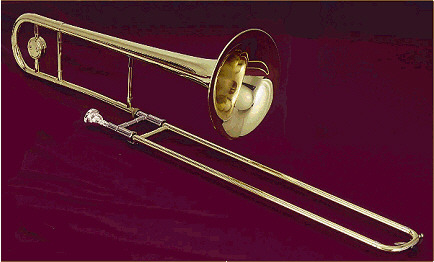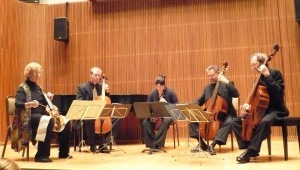
Smithsonian Consort of Viola, showing instruments supported by the players’ legs
The body of a standard cello is 48 inches (121.92 cm) long. The instrument is far too long to be held in the arms, as are the violin and the viola, which are 14 inches (35.8 cm) and 16.5 inches (41.9 cm) respectively. The cello is held in a vertical position, with the player’s legs stabilizing the instrument. One of its predecessors, the viola da gamba, tells you in its very name that it was to be held in the legs (gamba = leg in Italian)
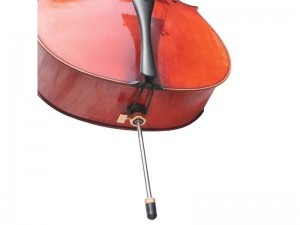
End pin extended
There has been a modern move towards the angled endpin, which holds the instrument at a different angle to the body than the straight endpin.
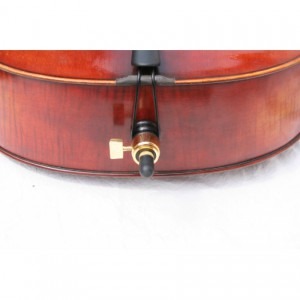
End pin contracted
The sound of the cello is a warm low voice, more substantial than that of the viola, but not as deep as that of the double bass. In many chamber ensembles, the cello forms the bass voice, as in string quartets, where its support of the upper strings is an integral element of the success of the ensemble.
The cello had a large repertoire in the Baroque period, with 25 cello concertos by Vivaldi alone. The most famous of the solo cello works of the period are the six solo cello suites by Bach, written around 1720.
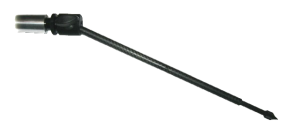
Angled carbon fibre endpin
Top cellists, listed chronologically, include:
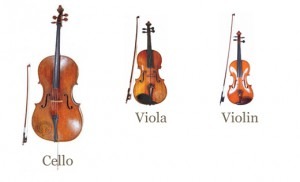
Violin – Viola – Cello
Pablo Casals (1876-1973)
Emanuel Feuermann (1902-1942)
Pierre Fournier (1906-1986)
André-Nicolas Navarra (1911-1988)
János Starker (1924-2013)
Mstislav Rostropovich (1927-2007)
Jacqueline Du Pré (1945-1987)
Paul Tortelier (1914-1990)
Anner Bylsma (b. 1934)
Mischa Maisky (b. 1948)
Julian Lloyd Webber (b. 1951)
Heinrich Schiff (b. 1951)
Maria Kliegel (b. 1952)
Raphael Wallfisch (b. 1953)
Yo-Yo Ma (b. 1955)
Steven Isserlis (b. 1958)
Truls Mørk (b. 1961)
Jian Wang (b. 1968)
Han-Na Chang (b. 1982)
Leading cello Works include:
Bach: Cello Suites, Nos. 1-6, BWV 1007-1012
Pablo Cassals: Bach: Cello Suite No. 1, BWV 1007: I. Prelude.
Bach: Cello Suite No. 6 in D Major, BWV 1012: II. Allemande. Yo-Yo Ma cello
Dvořák: Cello Concerto in B Minor, Op. 104
Antonín Dvořák: Cello Concerto in B Minor, Op. 104, B. 191: II. Adagio ma non troppo. Mstislav Rostropovich, cello; London Philharmonic Orchestra; Carlo Maria Giulini, conductor
Tchaikovsky – Variations on a Rococo Theme in A Major, Op. 33
Tchaikovsky: Variations on a Rococo Theme in A Major, Op. 33: Theme: Moderato semplice. Truls Mørk, cello; Oslo Philharmonic Orchestra ; Mariss Jansons, Conductor
Beethoven: Triple Concerto for Violin, Cello and Piano in C Major, Op. 56
Triple Concerto for Violin, Cello and Piano in C Major, Op. 56: I. Allegro. Itzhak Perlman, violin; Yo-Yo Ma, cello; Daniel Barenboim, piano: Berlin Philharmonic Orchestra
Brahms: Double Concerto for Violin and Cello in A Minor, Op. 102
Schumann: Cello Concerto in A Minor, Op. 129
André-Nicolas Navarra
Elgar: Cello Concerto in E Minor, Op. 85
Jacqueline Du Pré. Elgar Cello Concerto in E minor
Bruch: Kol Nidrei, Adagio on Hebrew Melodies, Op. 47
Bruch: Kol Nidrei, Adagio on Hebrew Melodies, Op. 47. Maria Kliegel, cello; Ireland National Symphony Orchestra; Gerhard Markson, Conductor
Saint-Saëns: The Carnival of the Animals: No. 13. The Swan




